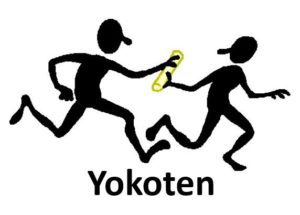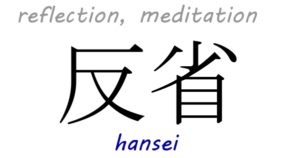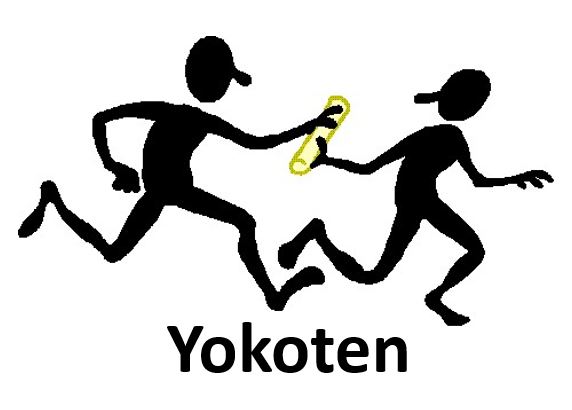Here are 3 words you probably haven’t heard, but are critical to your Lean journey.
YOKOTEN HANSEI HEIJUNKA
Like many lean terms we commonly use, they originate in Japan, and we continue to use the
Japanese term here. To be honest, I’m not 100% sure why, but it does make it a little more
interesting and fun.
You don’t have to be doing Lean for very long before you start Hearing Japanese words to
describe things. No doubt you will come across “Kanban, muda and Kaizen” almost immediately.
Depending how far you take your learning, there are many many more terms that are widely
used in the lean community, and for the most part, we all know what they mean.
This article if focusing on 3 words you probably haven’t come across yet. But they are absolute
super powers to have in your arsenal when gong to war with waste.
Lets dive in. The first on is Yokoten. This means “Horizontal information”. Why is this so
important, and how do we do it?
Yokoten is the practice of sharing information across the organization. Generally information
flows up and down to and from managers.

We often forget, that departments laterally can
benefit from our lessons learned as well. The most glaring example of this in the way we teach
lean is improvement videos. During the morning meeting if you are sharing your videos the
office people see shopimprovements, the shop people see office improvements. The
finishing department can learn from the breakout department. It’s viewed as critical for all
departments to share information to spark ideas and learn from each other.
So if you can’t get everyone together at the same time to practice Yokoten at your morning
meeting, devise a for all departments to share their innovations and lessons learned.
The next is Heijunka: By definition this means “Level your schedule”. One mistake I see all
the time is people get ahold of lean concepts and take them to the extent of what they mean,
without realizing they are guiding principles to help with decisions. An example is Single piece
flow, we hear that and think we need to start building everything one at a time, Don’t do this, the
result will be very bad.

Another one is that lean companies deliver fast. Yes, I would tend to
agree that lean companies generally have better performance than most, but delivering next day
can be detrimental to your factory. When you practise Heijunka, you are collecting orders for a
period of time, then building a level schedule from that. It may look something like this.
Monday orders in: … A – B – C – B – B – C – A
Tuesday orders in:… B – B – C – A – A – C – B
Wednesday orders in: A – C – B – A – B – C – A
Thursday orders in:….A – B – D – A – C – A – B
Friday orders in:……..C – B – A – D – B – C – A
So if you were to build in that order you would be swinging your factory wildly from product to
product, lots of set up and tear down, likely result is a huge lead time. But if you collected
those orders for one week, then released them to the plant, the orders in would be all over the
map, but the plant would see this schedule:
Monday production:…… A – A – A – A – A – A – A
Tuesday production: ……A – A – A – A – A – B – B
Wednesday production: B – B – B – B – B – B – B
Thursday production:…. B – B – B – C – C – C – C
Fridays production:……. C – C – C – C – C – D – D
Even just looking at those two comparisons one calms the mind. But remember: the goal is to
get better, so as your improving, maybe you can reduce that to 4 days, then 3, then 2, and
maybe one day, you can achieve next day delivery. But in the beginning, don’t get to lean to
fast and level that schedule as much as possible without upsetting your customers.
The last word is Hensai. This is a very deeply ingrained practice in the Japanese culture that
we could all benefit from. It means “To reflect with regret”, or I prefer deep reflection.

This is the art of being able to reflect on your own actions and use the reflection to improve for next time.
So it could be to take 5 minutes after hosting a morning meeting and writing down all the things
that didn’t go as you planned. Keep those notes handy, use them when planning your next
meeting. Lynn and I often have the pleasure of speaking at the popular wood shows.
Admittedly, at first, I think we were average at best. But then we started to do the Hensai. Right
after each keynote, we immediately went to a quite place with a pen and paper and wrote down
all the things that went wrong.
Slide 98 didn’t play
When we said “X” we could see people didn’t respond
Audio connection was a struggle in the beginning
Noticed people on their phones during “X” part of the presentation, must have been boring
Internet was lagging while playing videos
And this list started out as a page or more long. Within a few more speaking opportunities we
were able to iron out a lot of the defects and one year we even won the best presentation award
at the Vegas wood show. I didn’t need any more proof than that for the power of Hensai.
What would happen if you could get people in your organization doing Hensai at the end of each
day for 10 minutes? Reflect on what could have went better and how. Then try again tomorrow.
As we dig deeper into our learning from Japan, we start to see how a country with some of the
most expensive labour can compete with China right next door who as some of the cheapest
labour. And for me personally, the lesson always remains, just how sloppy we are here in North
America. I mean that in the nicest possible way, with a hint of tough love.
If you love these articles and the woodworking networks podcast, and want to further your lean
learning, consider following our new Quantum Lean podcast “on the shop floor”. Find it on
YouTube and Spotify.
And if you wanted to learn more about the Japanese principle we learned today and more. Just
txt the word “YOKOTEN” to (226) 971-2144 and someone will contact you shortly.
